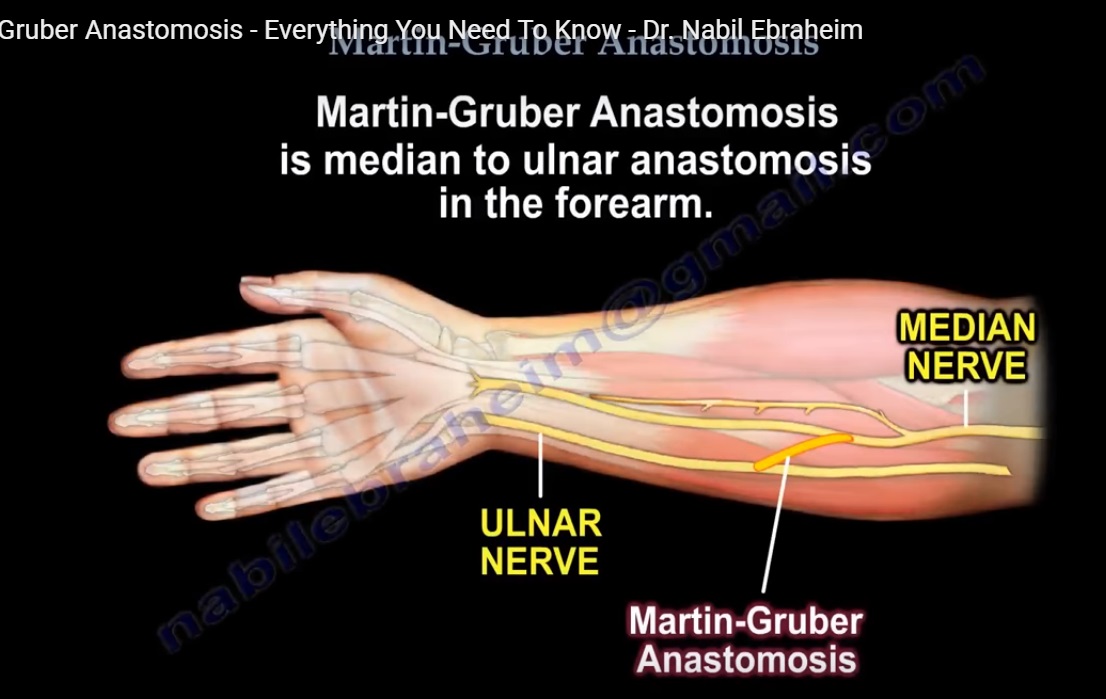Courtesy: Prof Nabil Ebraheim, Unviersity of Toledo, Ohio, USA
- Martin-Gruber Anastomosis is median to ulnar anastomosis in the forearm.
- It occurs through a communicating nerve branch between the median nerve and the ulnar nerve in the forearm.
- This connection carries motor nerve fibers. It can be confusing clinically and also on EMG.
- It has clinical significance for understanding the median nerve lesion and carpal tunnel syndrome.
- The axons will leave the median nerve or the anterior interosseous nerve crossing through the forearm to join the main trunk of the ulnar nerve, innervating the intrinsic muscles of the hand.
- It occurs more on the right side and it could be autosomal dominant.
- It is a confusing presentation with clinical implications.
- The lesion above the communicating branch will affect the median nerve muscles.
- A lesion below the anastomosis (connecting branch) will not affect the median nerve muscles, it will spare the thenar motor intrinsic muscles of the hand.
- An isolated ulnar nerve lesion at the elbow will produce an unusual pattern for intrinsic muscle paralysis.
- Martin-Gruber Anastomosis is the most common anastomosis anomaly between the two nerves.
- In cases of nerve lesions of the median or ulnar nerve, this anastomosis serves as a conduit or an alternative innervation of parts of the hand and the forearm (it is really a detour). This can be a good explanation for difficult challenges, especially in the differential diagnosis.
- The incidence is high (about 15%). You should factor Martin-Gruber anastomosis into the differential diagnosis and the diagnosis.
- Other scenarios: If the communicating nerve arises from the anterior interosseous nerve, then a patient with anterior interosseous nerve palsy may present with hand intrinsic weakness, normally supplied by the ulnar nerve. Think of Martin-Gruber anastomosis.
- Damage of the ulnar nerve at the wrist will lead to severe deficit of the intrinsic hand function greater than expected.
- There are other anastomoses available and reported as well as many variations that are possible.
- Three common anastomoses:
- 1. Ulnar to median anastomosis in the forearm – reverse of Martin-Gruber (Marinacci anastomosis).
- 2. Ulnar to median anastomosis in the hand (Riche-Cannieu anastomosis).
- a. Connection between the deep branch of the ulnar nerve and the recurrent branch of the median nerve.
- b.It carries motor fibers and this anastomosis usually occurs in the region of the thenar and adductor pollicis muscles
- 3. Berrettini Anastomosis a. Communication between the digital nerves (sensory nerves) arising from the ulnar and median nerves in the hand. b. Most common nerve anastomosis pattern
- When the examination does not make sense and it is confusing, you can consider Martin-Gruber anastomosis.

Leave a Reply